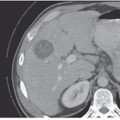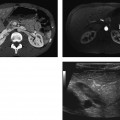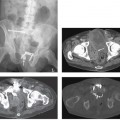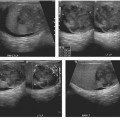CASE 88 A 54-year-old man presents with abdominal pain, vomiting, and rectal bleeding. Fig. 88.1 (A–C) Axial CT images obtained after administration of an oral positive-contrast medium show the typical bowel-within-bowel configuration of intussusception. A polypoidlike lesion (arrow) is noticed within the affected bowel loops and may be consistent with a tumor acting as a lead point. There is no sign of bowel obstruction, as the oral positive-contrast material is seen beyond the involved loops as well as in the colon. No peri-inflammatory changes are noticed in the surrounding mesenteric fat. Axial contrast-enhanced computed tomography (CT) images (Fig. 88.1) show an intussuscepted small bowel loop within the left midabdomen with a polypoid-appearing lead point. Contrast is seen beyond this loop and in the colon. Intussusception Intussusception is the invagination of a bowel loop with its mesentery (intussusceptum) into the lumen of a contiguous loop (intussuscipiens). This abnormality mostly occurs in infants (40% at an age of 6–7 months) but also in adults (5%), accounting for 1% of all bowel obstructions. Intussusceptions may affect almost any part of the small and large bowel, so that different types have been described: ileocolic, ileo-ileocolic (together they account for 90% of cases in childhood), ileoileal, and colocolic. Intussusceptions may be further classified as idiopathic or nonidiopathic if a causative lead point is present. Pediatric patients usually present with colicky abdominal pain, vomiting, and the typical red “currant jelly” stools (i.e., stools mixed with blood and mucus), although most infants have only stools positive for occult blood. Physical examination may reveal a mass upon palpation of the abdomen. Fever is rarely a presenting symptom and may be the result of a complication, such as sepsis. Adults present with nonspecific complaints similar to symptoms of bowel obstruction.
Clinical Presentation
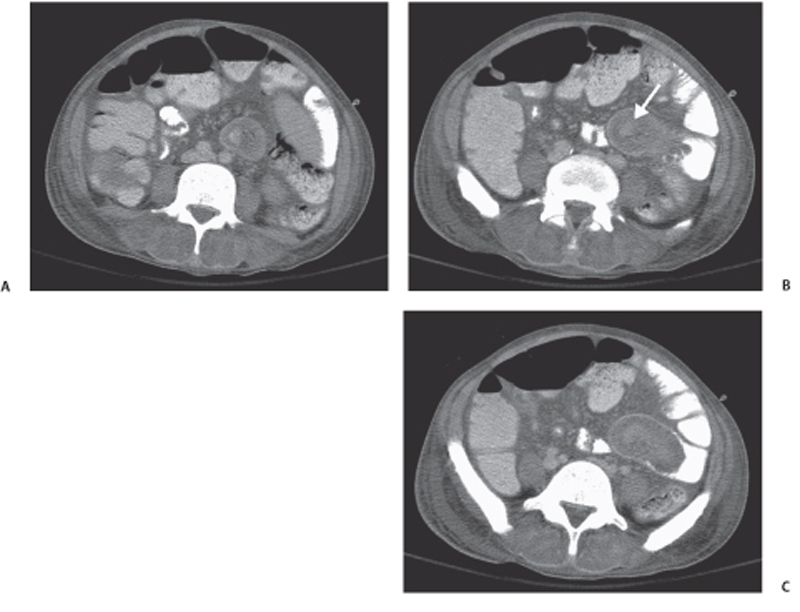
Radiologic Findings
Diagnosis
Differential Diagnosis
Discussion
Background
Clinical Findings
Complications
Stay updated, free articles. Join our Telegram channel

Full access? Get Clinical Tree


